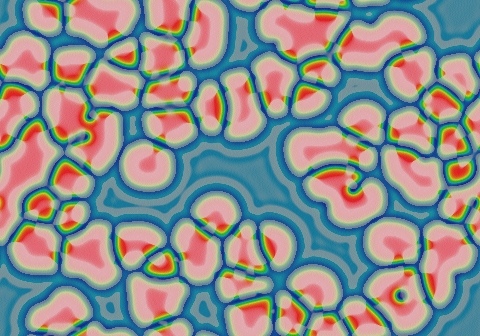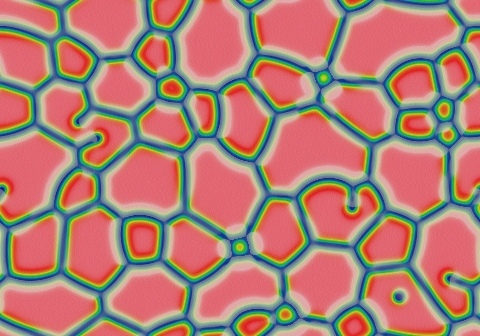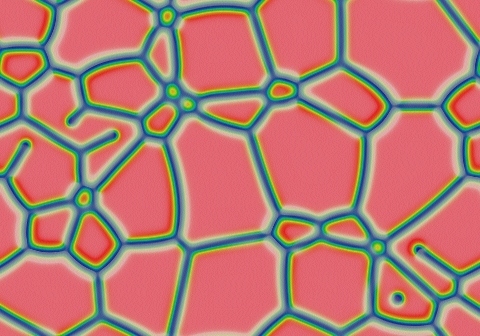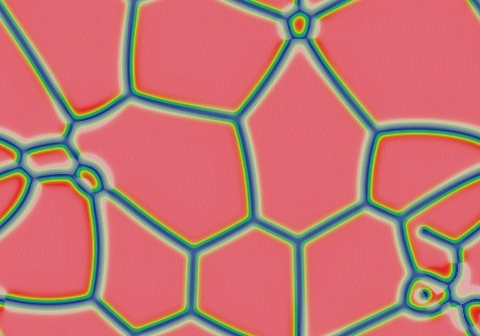Gray-Scott Model at F 0.0900, k 0.0590
These images and movie demonstrate the behavior of the Gray-Scott reaction-diffusion system with σ=Du/Dv=2 and parameters F=0.0900, k=0.0590.
Starting patterns of blue spots produce solitons and worms; the worms grow. Starting patterns of red spots, as seen here, become a network of blue lines enclosing red "bubbles", which gradually coalesce like soap bubbles. Individual bubbles occasionally contain one-ended worms, which disappear if their bubble shrinks too much. Rarely, bubbles will contain solitons; these survive even if their bubble is shrunk, resulting in a small cystlike bubble, seen here starting at 0:45. (Compare this to what happens to the north).
In the pattern shown here, 7 bubbles remain after 1,000,000 tu; after an additional 1,800,000 tu there is a single hexagonal bubble and the "cyst" containing the soliton. (old video)
At F=0.09, the western limit for "soap bubbles" with surface tension is about k=0.05834, and the eastern limit is about k=0.05996.
Categories: Munafo ρ; Wolfram 2-a (glossary of terms)
 increase F increase F
 | |||
 decrease k  |


|
15 frames/sec.; each fr. is 465 iter. steps = 232.5 tu; 1801 fr. total (418,732 tu) |  increase k 
|

|


| ||
 decrease F decrease F
 |
In these images:
- Color indicates level of u, ranging from purple (lowest u values) through blue, aqua, green, yellow and pink/red (highest u values)
- Areas where u is increasing are lightened to a light pastel tone; where u is decreasing the color is vivid.
- In areas where u is changing by less than ±3×10-6 per tu, an intermediate pastel color is seen. This includes areas that are in steady state or equilibrium.
''tu'' is the dimensionless unit of time, and ''lu'' the dimensionless unit of length, implicit in the equations that define the reaction-diffusion model. The grids for these simulations use Δx=1/143 lu and Δt=1/2 tu; the system is 3.2 lu wide. The simulation meets itself at the edges (periodic boundary condition); all images tile seamlessly if used as wallpaper.
Go back to Gray-Scott pattern index
This page was written in the "embarrassingly readable" markup language RHTF, and was last updated on 2015 Nov 09.
 s.27
s.27